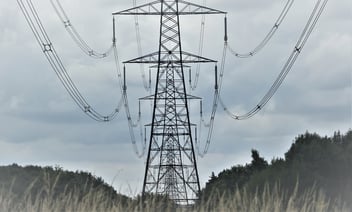Microgrid applications – Grid Connection Capacity Management and Market Access Benefits (Part 3)
Microgrids have a number of applications and I have categorised these noting that there can be some overlap between these on any particular microgrid deployment. Categories include:
- Grid, Microgrids, Nano grids and VPPs - what’s all that about? (Part 1)
- Remote or off grid systems (Part 2)
- Grid connection capacity management and market access benefits (Part 3)
- Supply security improvement (Part 4)
- Resilience applications including black start applications (Part 5)
- Driving low carbon initiatives (Part 6)
- Observations on the drivers to deploy microgrids (Part 7)
The focus of this blog is on grid connection capacity management and market access benefits for microgrid applications that include a utility grid connection.
The management of microgrid resources to maintain power flows through utility grid connections including power export and demand import provide economic benefits that support the business case for microgrid developments. The same is true for the energy service market access that the grid connections provide to microgrids. These statements are important and merit further explanation.
Managing the power flows through the grid connection can reduce or avoid the need for new connection capacity. Traditionally as demand increases, regulatory authorities allow utility distribution network operators (DNO)s and utility transmission network operators (TSO)s to reinforce networks by adding new circuits or by upgrading existing circuits e.g. upgrading transformers, lines and cables etc. This is a traditional “wired” solution. The management of local flexible demand and generation offers DNOs and TSOs alternative “non wire” solutions (non-wires alternative (NWA)) that reduce or defer the need for expensive network reinforcements and hence help minimise use of system charges (UoS) to customers. Demand and generation flexibility services are procured by the DNO or TSO as part of the NWA solution which opens up a distribution flexible service market opportunity for flexibility service providers (FSP) which can include microgrid operators. The ability of microgrid operators to manage their microgrid assets to flex their power flows to and from the utility grid provides the capability to trade in local flexibility markets.

NWAs can be even more important for single customer connection assets where the DNO allocates reinforcement costs to the customer either as an upfront charge or as an element of the UoS charges specific to that customer. By managing the microgrid assets to control power flows to and from the utility grid within existing connection thermal and other technical limits, the need for expensive reinforcement can be avoided by that microgrid and the customers within the microgrid. Over the coming decade, the demand for electricity is forecast to rapidly increase driven by the transition to electric vehicles and electric heating. This may see an increase in local community microgrid type arrangements to manage local generation and demand within existing network limits to avoid increased utility network charges.
In addition to maintaining utility connection power flows within existing asset design limits to avoid reinforcement, managing microgrid assets can also be used in other ways to manage import/export flows to reduce UoS charges. There is often a fixed element UoS charge associated with allocated connection capacity as well as a real time metered use element. Minimising the energy flow e.g. MWh in and out of the microgrid to the utility connection will reduce the real time metered element of the UoS charges. This does also require considering any revenues being derived from market trading that result in UoS charges.
Managing microgrid power flows on the utility grid connection can also be used to reduce the fixed capacity element of the UoS charge which is power based e.g. MWs. By maintaining the microgrid utility grid connection power flows within set limits, the capacity charge element of the UoS charge can be reduced. Again, the use of the utility grid connection for market trading derived revenues has to be considered when managing the microgrid within set grid connection capacity limits.
Where the microgrid can control its flexible demand and generation assets to flex the power flow through the utility grid connection, this can allow trading in a number of markets depending on the country, state or province. In the UK DNOs are now operating local flexibility markets and the TSO is operating various markets for dynamic and non-dynamic frequency control including the Balancing Mechanism (BM), Firm Frequency Response (FFR), Mandatory Frequency Response (MFR), Dynamic Containment (DC), Dynamic Moderation (DM) and Dynamic Regulation (DR). The dynamic frequency control services are fast response services introduced due the reduction in system inertia as conventional synchronous generators have been displaced by non-synchronous technology associated with RES. There is also the electricity wholesale market and, the TSO is looking at new ancillary services covering black start services using DER. In particular, microgrids with BESS can take advantage of these market opportunities to stack revenues from different market and system services subject to the market rules. The utility grid connection provides the access to these potential market revenues for the microgrid.
In terms of microgrid schemes I have come across or worked on that fit into the category of grid connection capacity management and market access benefits discussed above I can offer the following, noting that some of these are not in the public domain and so I am limited as to what I can disclose.
- In terms of grid connection capacity management one of Smarter Grid Solution’s (SGS) earlier microgrid control systems was for the Orkney islands off the north coast of Scotland. While the Orkney islands has a marine cable connection to the Scottish mainland, owned by the distribution network utility company (SSEN) that owns and operates the distribution network on the Orkney islands and the north of Scotland, the abundance of wind had seen wind farm developments reach a point where power export from the islands to the mainland could not be accommodated at times. Rather than commission connection upgrades to the island at an estimated cost of £30m GBP, SSEN chose a NWA solution by creating a microgrid on the island to control generation export within the island grid connection capacity. The SGS deployed microgrid control system provides real-time constraint management and released over 25 MW of additional generation hosting capacity. 24 renewable distributed generators totalling 39 MW are controlled resulting in 120% of local electricity demand now being met annually by RES. SSEN saved £30 million by avoiding the need for a subsea cable. Clearly this is at the larger end of microgrids but the principles, benefits and approach to operating a utility microgrid are consistent with other similar microgrids.
- In terms of minimising use of system charges and also trading in markets, SGS are presently working as part of a consortium looking at the development of a UK city centre private wire network (PWN) and associated microgrid that will cut customer energy bills and provide green heat, electricity and transport for residents, helping the city council hit their net zero targets. SGS are tasked with providing a microgrid control system that will manage centralised BESS and PV as well as decentralised BESS and PV and distributed EV charging infrastructure. In addition, the microgrid control system will provide data to the operators of a combined heat and power energy from waste plant that will be a major source of electricity to the PWN (as well as a supply to a heat network), to influence the balance between heat and electricity production at times. The microgrid controller will take in wholesale market price, demand and generation forecast data and use the BESS to minimise the use of energy from the wholesale market when the PWN demand and wholesale prices are forecast to be high. The microgrid controller will also be used to minimise utility grid UoS charges in order to offer customers on the PWN reduced energy tariffs. The overall concept aims to attract further RES and customers onto the PWN.
This last example is an illustration of how microgrid control systems can be used in systems with multi energy vectors, in this case electricity, heat and transport. To enable the city council to monitor the impacts on carbon reduction over time, the microgrid controller will also estimate the real time carbon intensity of the power on the microgrid. The ability to monitor carbon intensity on microgrids is becoming a more important feature not just for assessing historical carbon reduction but for real time control of wholesale energy top ups where carbon intensity varies throughout the day and week.
SGS’s microgrid control solutions can include as an option for third party market and DER forecasting as part of the microgrid control solution using our Strata Resilience product.

.png)

.png)



